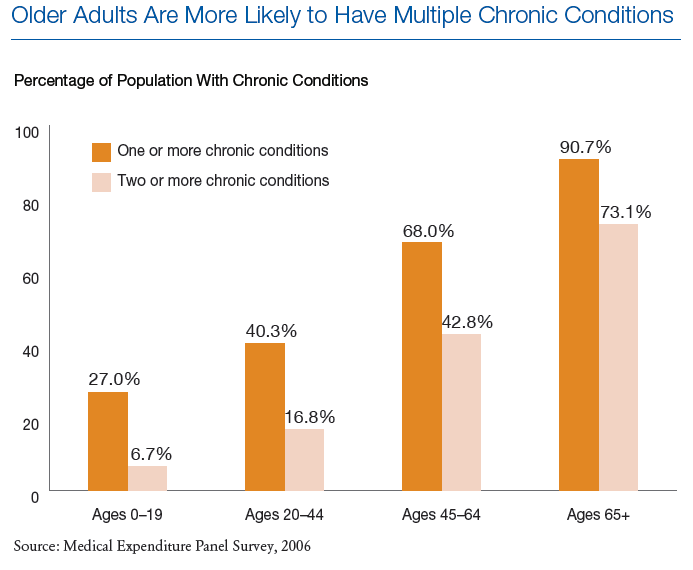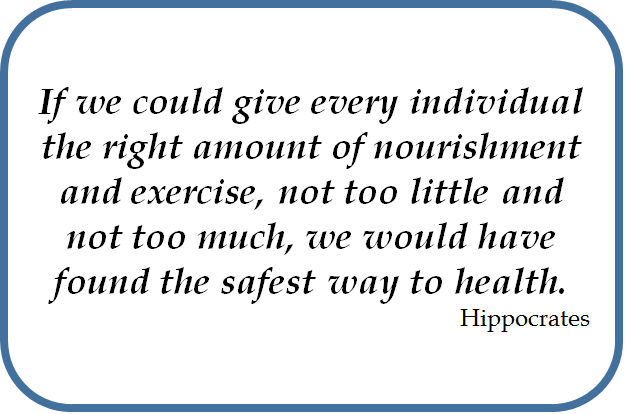Cancer, diabetes and heart disease; they’re all chronic diseases. That means there is no cure, only treatment and once diagnosed people must live with these diseases for the rest of their lives. We could also add osteoarthritis, chronic back pain, and kidney and lung diseases to the list, among many others.
Most of us will likely have at least one chronic diseases as we get into the later years of life. Although that doesn’t mean the disease will be the cause of death, but it will be something with us each day of our lives. Perhaps surprisingly, there are more adults with two or more chronic diseases than there are with one.
We tend to think of chronic diseases as individual conditions that have no relation to one another. If a person has diabetes and later diagnosed with cancer, most of us think of this as bad luck as opposed to the diseases being related to one another in some way. But we now know different chronic diseases are more connected than we first thought.

This focus on diseases as independent of each other is firmly rooted in our healthcare systems. It’s easy to see when you go visit (or are admitted) to a hospital. How is the hospital designed? By organs. On one floor, or area, you have the cardiac (heart) ward, another floor is for people with lung disease, yet another section for people with kidney disease, and so on.
We even train our healthcare professionals like this as well. We have cardiologists for the heart, endocrinologists for diabetes, oncologists for cancer, etc. as if our organs and bodily systems act as separate units. This could not be further from the truth. As humans, we’re not a collection of organs that act independently of one another, we’re an integrated biological machine. You can’t treat one part of the body without having it affect other parts.
There are a number of reasons why more adults have two or more chronic diseases than just one. One is that our treatment of chronic diseases like cancer and heart disease is much better than in the past. There are far more people living with a cancer diagnosis than ever before, and when people live longer, there is opportunity (for a lack of a better word) to get another chronic disease.

Another reason is that treatment for one disease may actually increase the risk for another. Radiation therapy for breast cancer may increase risk for heart disease due to the heart being in the area where the radiation is targeted. Drugs used to treat HIV can lead to abnormalities in blood cholesterol increasing risk for heart disease. In these cases, one has to weigh the risks and benefits of the treatment, but usually the treatments outweigh the added risk.
And lastly, for many chronic diseases there are common biological processes. For example, most often people with diabetes die of heart disease because the extra sugar circulating in the blood damages the blood vessels. Diabetes is also a risk factor for kidney disease. Likewise, if a person has atherosclerosis in one or more of the arteries in their heart, it is likely that there are other arteries elsewhere with atherosclerosis. Atherosclerosis in the kidneys can lead to kidney failure, while atherosclerosis in the carotid (neck) arteries is a risk factor for stroke. Given this, the ideal treatment of one disease should take into account all possible outcomes and not just focus on a singular organ or system.
The good news is that efforts to prevent one disease are generally effective at preventing multiple diseases. Some of this has to do with multiple diseases having similar biological processes, but it mainly has to do with the many benefits of prevention. And what I mean here, is the benefits of healthy lifestyle behaviours.
When someone smokes, it increases his/her risk for a number of cancers, heart disease, stroke and lung disease. That’s why for the person who smokes, quitting smoking is the best thing he/she can do for their health. Likewise, healthy eating is effective at preventing a wide range of conditions, heart disease, diabetes, stomach/gut disturbances, some cancers, obesity as well as other conditions. We also know that regular activity can help prevent those and other diseases.

It’s not just prevention that healthy living is good for, it is also for treatment. The use of exercise and nutrition has been used for decades to treat people with diabetes and heart disease. Exercise is also a recommended treatment for conditions that one might think it make the situation worse, such as osteoarthritis, chronic fatigue (although the amount of activity needs to be carefully planned) and back pain. Recently, the Clinical Oncology Society of Australia published a statement on the use of exercise to treat patients with cancer. This is likely the first of its kind to recognize that lifestyle therapy should be part of standard cancer care.
Of course, the treatment of many chronic diseases will include the use of medications, however, pills should never be thought of as a treatment for an unhealthy lifestyle. I’ve seen plenty of patients who have improved their lifestyle behaviours and had their medications for hypertension, cholesterol and blood sugar reduced, and even stopped.
Being active, healthy nutrition, not smoking among other aspects of a healthy life like sufficient sleep, a strong social network and avoiding sitting too much are the ideal prescriptions for preventing and managing chronic disease with a huge return on investment.
If you like this post, don’t forget to subscribe to my blog by clicking the FOLLOW button at the top of the right panel.


Leave a Reply